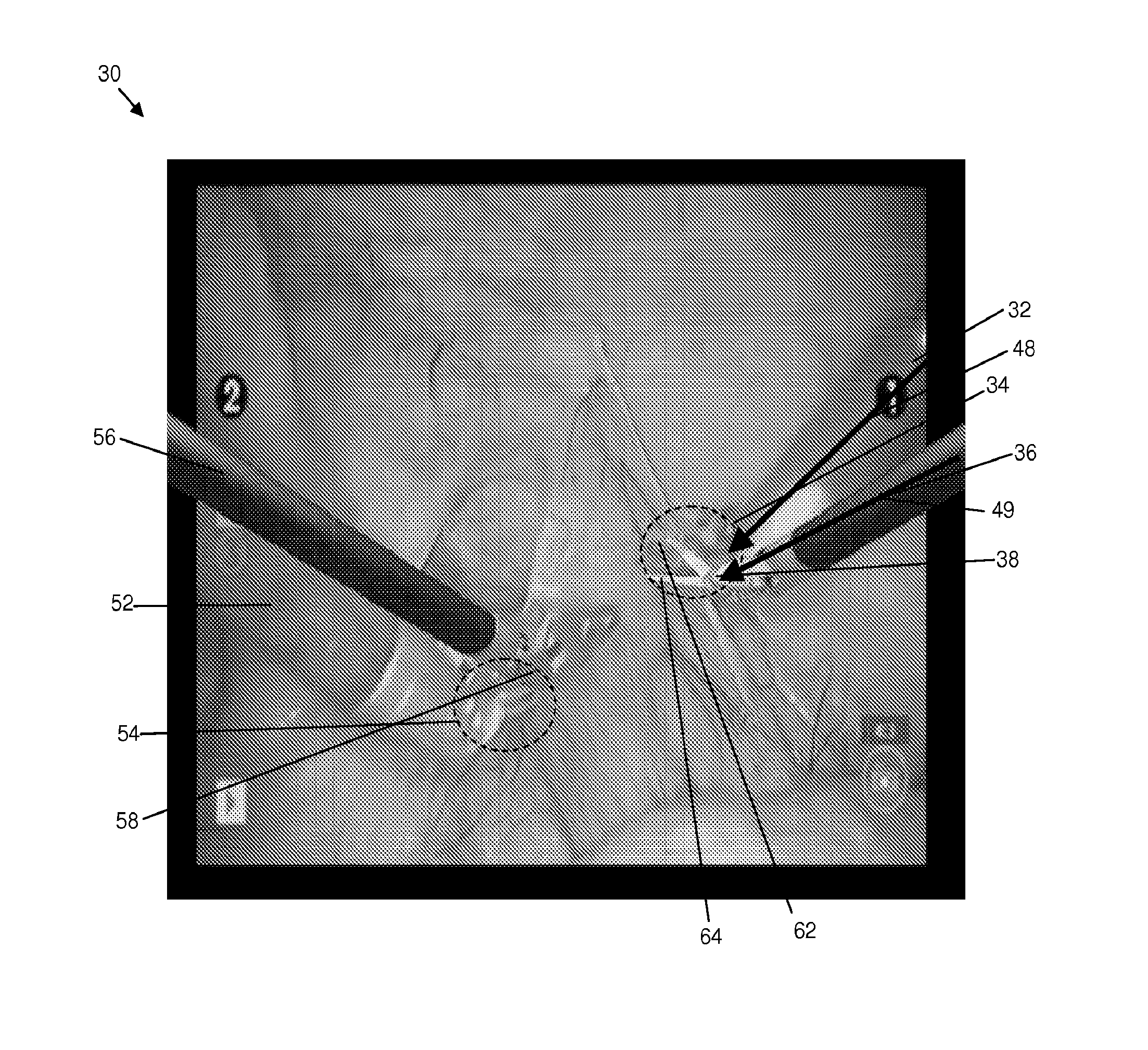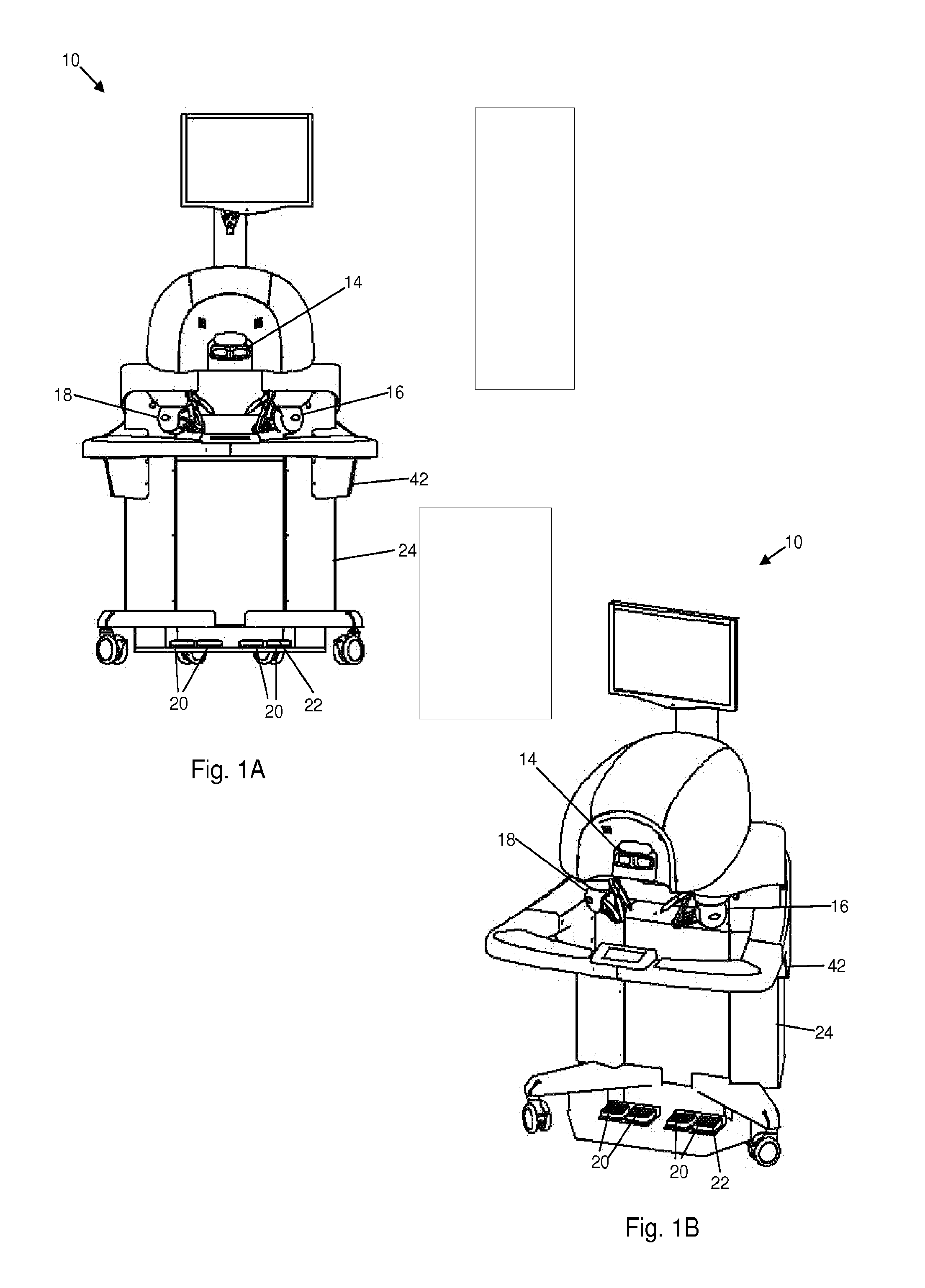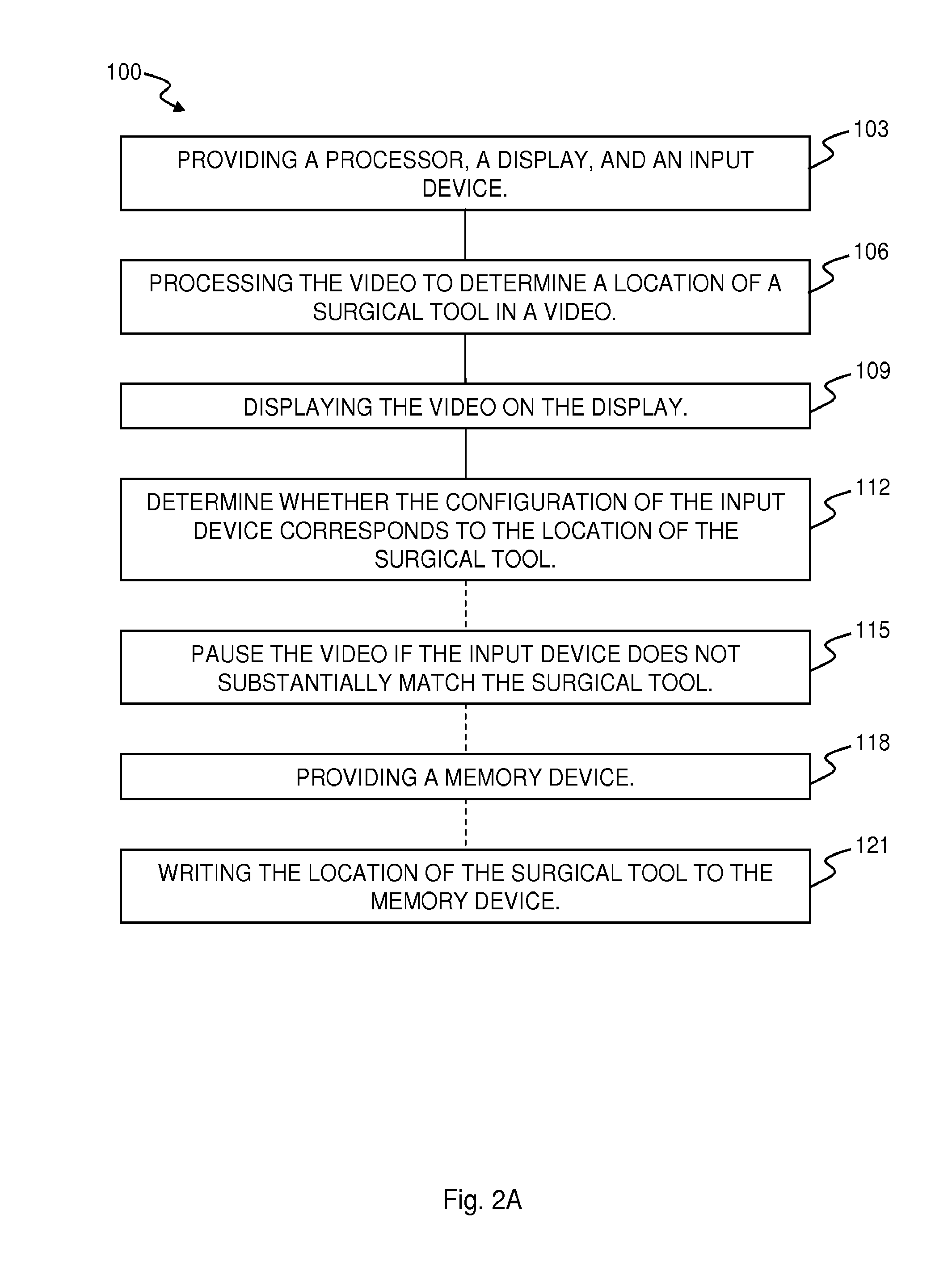Method and System for Automatic Tool Position Determination for Minimally-Invasive Surgery Training
a technology of automatic tool position determination and minimally invasive surgery, applied in the field of surgical training, can solve the problems of poor image quality, lack of visual feedback, and affecting the image received from the endoscope by a number
- Summary
- Abstract
- Description
- Claims
- Application Information
AI Technical Summary
Benefits of technology
Problems solved by technology
Method used
Image
Examples
case 1
[0104]When the eigenvalues are computed, they are compared to a threshold (noise reduction) parameter that is user selectable. Selection is made to eliminate the effect of small movements between frames—the higher the threshold value, the less small movements impact the optical flow calculation. The results fall into one of the following cases:[0105] A is nonsingular, so the block solves the system of equations using Cramer's rule.[0106]Case 2: A is singular (noninvertible), so the block normalizes the gradient flow to calculate u and v.[0107]Case 3: The optical flow, u and v, is 0.
[0108]Derivative of Gaussian:
[0109]Compute and use a Gaussian filter to perform temporal filtering. Specific temporal filter characteristics such as the standard deviation and number of filter coefficients are selected as appropriate.
[0110]Compute and use a Gaussian filter and the derivative of a Gaussian filter to smooth the image using spatial filtering. Specific standard deviation and length of the ima...
PUM
 Login to View More
Login to View More Abstract
Description
Claims
Application Information
 Login to View More
Login to View More - R&D
- Intellectual Property
- Life Sciences
- Materials
- Tech Scout
- Unparalleled Data Quality
- Higher Quality Content
- 60% Fewer Hallucinations
Browse by: Latest US Patents, China's latest patents, Technical Efficacy Thesaurus, Application Domain, Technology Topic, Popular Technical Reports.
© 2025 PatSnap. All rights reserved.Legal|Privacy policy|Modern Slavery Act Transparency Statement|Sitemap|About US| Contact US: help@patsnap.com



